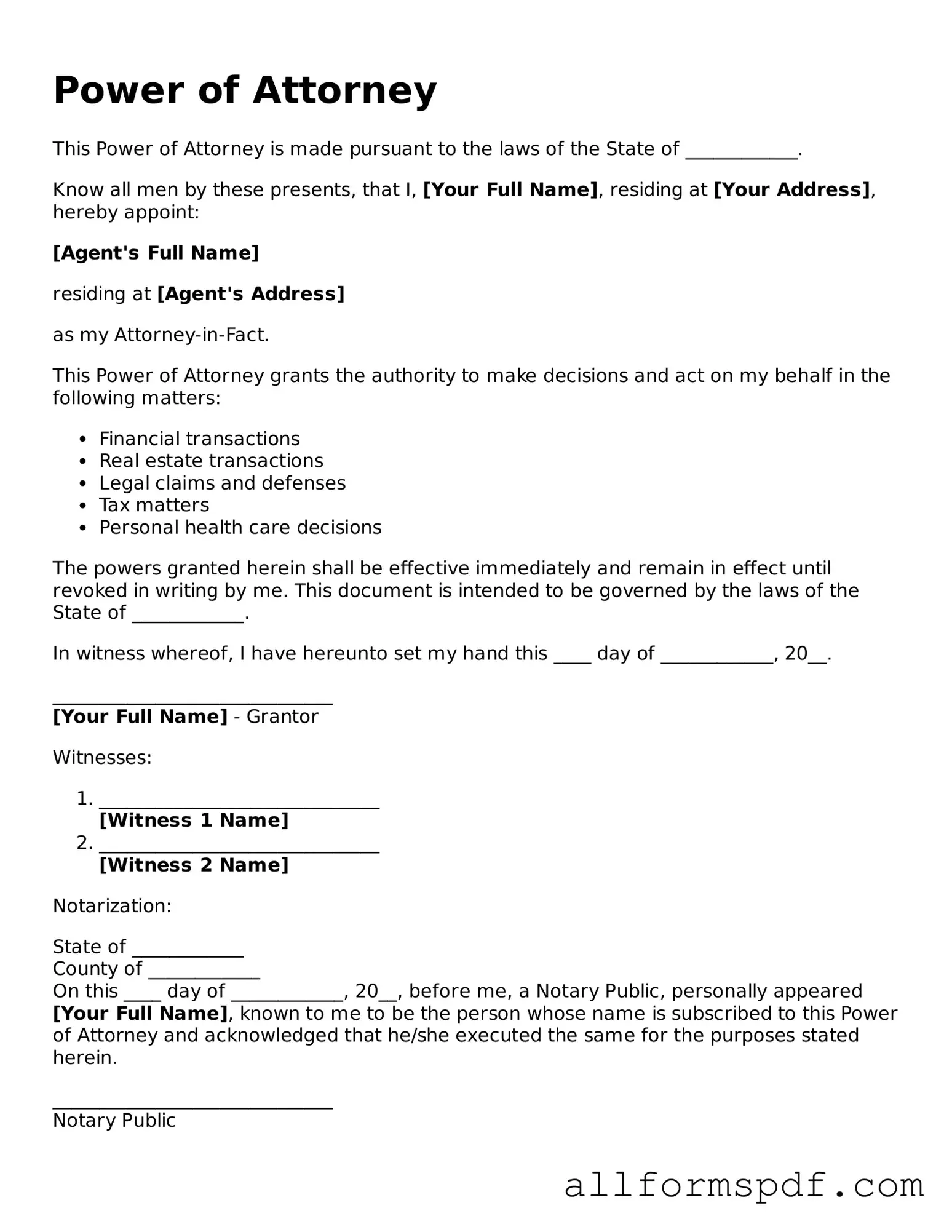Filling out a Power of Attorney (POA) form can be a straightforward process, but mistakes can happen. One common error is not specifying the type of authority granted. A general Power of Attorney gives broad powers, while a specific one limits authority to certain tasks. If the form does not clearly state this, it can lead to confusion later.
Another mistake is failing to date the document. Dates are crucial for legal documents. Without a date, it may be unclear when the authority begins or ends. This can cause issues if the agent needs to act on behalf of the principal.
Not including the full names of all parties involved is another frequent oversight. The principal and agent must be clearly identified. Using nicknames or initials can lead to problems in enforcement. Full legal names help ensure that there is no ambiguity.
Some people forget to sign the document. A signature is often required for the Power of Attorney to be valid. If the principal does not sign, the form may not hold up in legal situations. Additionally, some states require witnesses or notarization, which should not be overlooked.
Another common mistake is not discussing the decision with the agent beforehand. It’s important for the principal and agent to understand each other’s expectations. This conversation can prevent misunderstandings later on.
People sometimes choose an agent without considering their qualifications. The agent should be someone trustworthy and capable of handling the responsibilities. Picking someone without these qualities can lead to mismanagement of affairs.
Failing to review the form after filling it out is another error. Typos or incorrect information can invalidate the document. A careful review helps catch mistakes before the form is finalized.
Some individuals do not keep copies of the completed form. It’s important to have multiple copies available for the agent and any institutions that may need to rely on it. Without copies, there may be confusion about the agent's authority.
Another mistake is not updating the Power of Attorney when circumstances change. Life events such as marriage, divorce, or the death of an agent can affect the validity of the document. Regularly reviewing and updating the form is essential.
Lastly, people may overlook the importance of understanding the laws in their state. Each state has different requirements and regulations regarding Power of Attorney forms. Not being aware of these can lead to issues with the document's enforceability.
